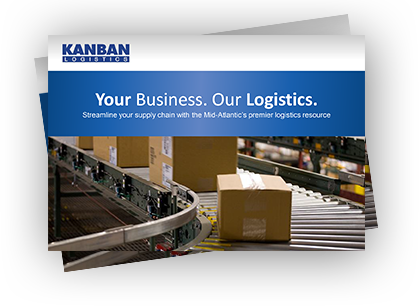Manufacturing professionals: Are you buying parts and other raw material inventory for your factory just to have it sit for weeks or months prior to consumption?
By holding this inventory on your books, you’re doling out money for assets that won’t turn into cash any time soon. You’re also wasting valuable plant space for inventory when it could be used for production.
To avoid these shortcomings, you can work with your suppliers to institute a vendor managed inventory (VMI) model.
What is a VMI strategy?
 With a VMI strategy, a third-party logistics provider (3PL) will store goods that your manufacturing operation will eventually require. Once the materials are needed, the 3PL performs just in time (JIT) delivery to your facility. The supplier of the materials retains ownership of the inventory until it is delivered to the factory.
With a VMI strategy, a third-party logistics provider (3PL) will store goods that your manufacturing operation will eventually require. Once the materials are needed, the 3PL performs just in time (JIT) delivery to your facility. The supplier of the materials retains ownership of the inventory until it is delivered to the factory.
3PLs routinely help to facilitate these arrangements – storing the materials on behalf of the supplier and then performing final delivery. The 3PL gives the supplier secure visibility to its warehouse management system (WMS) to manage min/max levels.
VMI is of substantial benefit to your operation as you only pay for – and take physical ownership of – materials when they are needed.
What are the benefits of VMI?
- Improve cash flow – pay for goods only when they ship.
- Reduce risk – having inventory close by provides a hedge against weather-related delays or quality problems that may necessitate re-ordering from a distant source.
- Reduce inbound receiving costs – when inventory from multiple suppliers is held at a single facility, predictable deliveries to your plant allow you to plan for an efficient receiving process.
- Free up production space – use production space for production instead of clogging it with boxes of inventory that won’t be needed right away.
VMI strategy: Only for the big boys?
Some smaller manufacturers hesitate to adopt a VMI strategy for fear of alienating suppliers, who may perceive the move as simply pushing costs back upstream in the supply chain. But VMI can be beneficial to suppliers as well. Think about it. Suppliers carry this inventory somewhere, often at a cost greater than they would incur at a 3PL warehouse near your factory. Also, suppliers can position inventory closer to you and reduce transportation costs.
VMI part of an inbound logistics strategy
A VMI strategy is one component of an overall inbound logistics approach to manufacturing operations. Other key inbound components include the following.
Third-party procurement. Right now, your buyers probably spend a good percentage of their time negotiating with, and procuring goods from, makers of boxes, nuts, bolts, and other consumable parts and materials. While necessary, these activities do little to improve factory output.
In addition to storing and delivering inventory with VMI and JIT capabilities, your 3PL can procure the materials that you require for manufacturing. As your 3PL may be purchasing for multiple customers, you can achieve economies of scale that you wouldn’t otherwise have on your own.
You can also free up your buyers to work on more important, larger contracts.

Kitting services. For many manufacturers, pre-assembly of component parts is also required during the production process. This assembly can take up a lot of time (as well as inventory space and manpower). To save a good chunk of this time – and, with it, a good chunk of money – many manufacturers utilize 3PL kitting services.
Kitting, as performed by a 3PL, is the act of taking the individual parts of a product, compiling them together in a “kit,” and then delivering that kit to the production operation for assembly.
Kanban Logistics can help implement a VMI strategy
For manufacturers in the mid-Atlantic region, Kanban can help enable a VMI model and support your manufacturing logistics needs by:
- Operating the inbound logistics warehouse for multiple suppliers
- Accurately managing inventory and replenishment
- Providing secure online access to inventory – for you, who would see all suppliers’ inventory, and for suppliers, who would have secure access to just their SKUs
To learn more about Kanban’s manufacturing logistics services, contact us today.
Never Miss a Blog Post
Join our email list to receive new posts in your inbox. We will never spam you. Opt out anytime.
Blog Post Categories
- Outsourcing 3PL (73)
- Warehousing (72)
- North Carolina (53)
- east coast logistics (47)
- manufacturing logistics (26)
- Food Logistics (19)
- Fulfillment (19)
- CSX Carolina Connector (18)
- Miscellaneous (14)
- FTZ / Free Trade Zones (12)
- Free Trade Zone (FTZ) (12)
- Intermodal (12)
- Rail Siding (12)
- Port of Virginia (11)
- Cross Docking (8)
- Kitting (5)
- Aerospace (3)
- Pharmaceutical (3)
- Kanban News (2)
- QVC Rework Services (2)
- container yard services (2)
- COO (1)
- flexible (1)
- iso certification (1)
- operations (1)
- scale (1)
- scott freeman (1)






